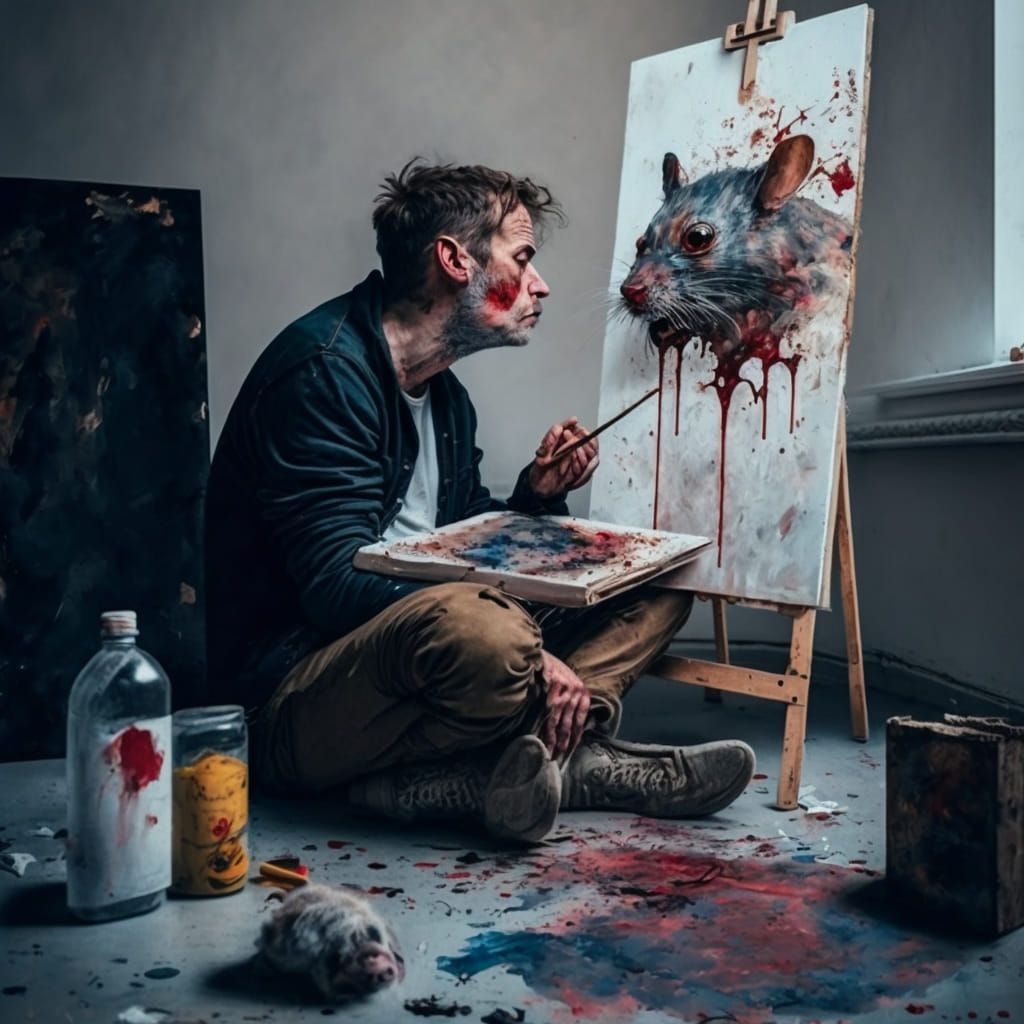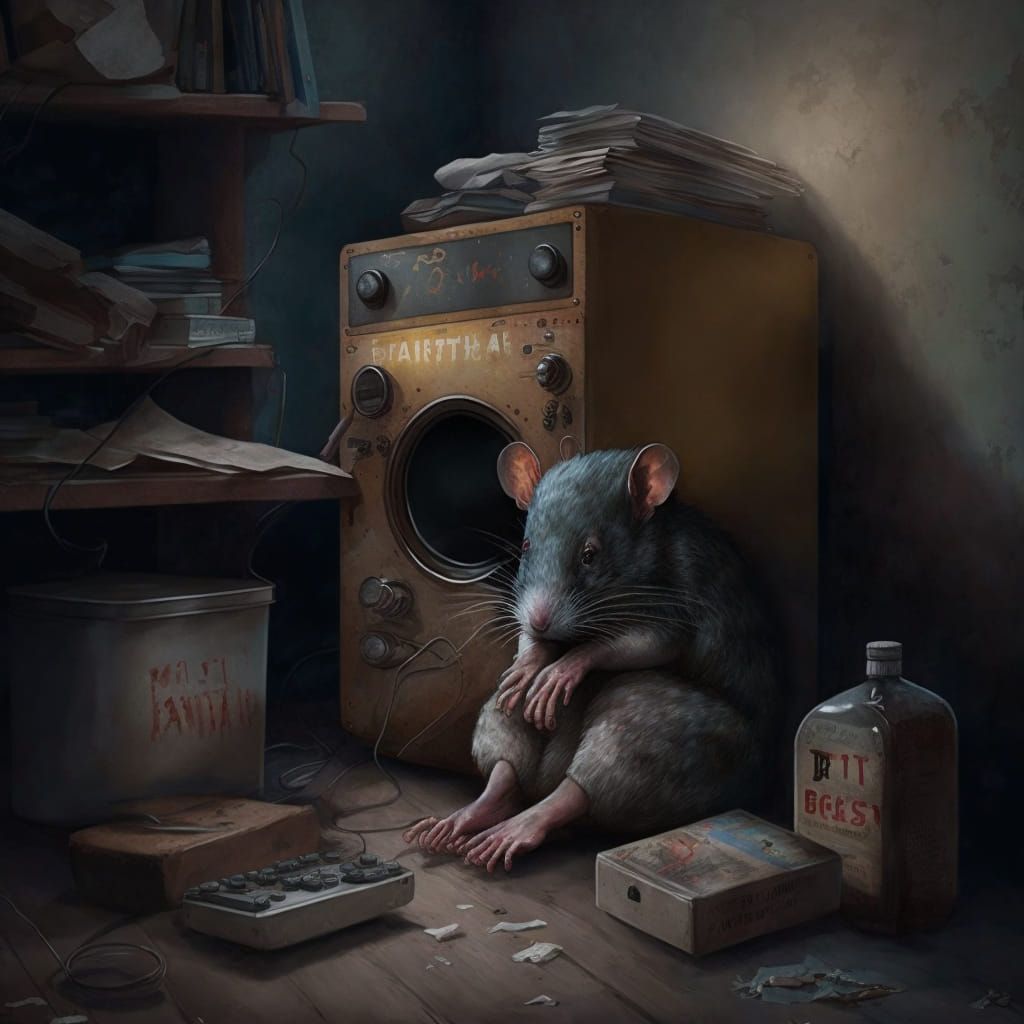ROY BLUMENTHAL
Artificial Intelligence and the Arcane Art of the Prompt
“In AI-art the ‘prompt’ is everything. Someday the prompt not the art will be copyrighted. The prompt can be varied, reused, become part of a code-base, a library of code-art production scripts, another tool ranked in one’s projects for use in buiding and constructing certain objects. The truly gifted AI-artist will think like a computer engineer with an artist’s imagination and clarity.”
Steven Craig Hickman
AI Art: Is it Art?
There’s a massive “debate” online about whether or not pictures created by MidJourney (and other artificial intelligence art-bots) are actually art. My view: “art” is a big word. It’s a word that’s been stuck on pedestals, and also pissed on and shat on. It’s a word that misdirects.
When I make live sketchnotes (my actual art-related activity out in the real world), I’m not intending to make art. I’m using art-techniques to make focused communication.
When I make MidJourney collaborations between myself and my artificial intelligence art-bot buddy, I’m amusing myself. I’m testing my grasp of these new art-making tools. I’m attempting to make images that communicate my point of view, my attitudes, my commentary. I’m attempting to make art.
Like most artists I know, I don’t show everything I’ve made. I select the things I want to show. I select them for my own reasons. Sometimes, those reasons have to do with the quality or novelty or immediacy of the picture. Sometimes, I’m intent on making a comment and marking my territory.

Who is the artist?
There is a loud contemporary debate about whether or not the human person writing the prompts is “the” artist, or if the artificial intelligence art-bot is the artist. When I write a prompt, I’m actually using words in an extremely heightened and directed way. I see my own prompt-writing as a type of poetry.
A poem is not a random outpouring of words. It’s a set of selected and ordered words, placed in a structured environment, with the intent to convey something to a person partaking of that particular poem.
A prompt written for MidJourney to create an image is the same. Those words are selected and ordered and structured, and they make something.
There are simple ways to write prompts. And complicated ways. Sometimes the simple and the complicated produce images that appear to be in similar universes.
Regardless of what type of words are used in the prompts, the resulting images themselves are artifacts of the prompts. The prompts cause those images to be assembled in the swirling electrons of the artificial intelligence’s machinery.

The prompts I write yield images that will most likely be different to images yielded by prompts written by you. This is because my words have a trace of my intention in them. But it’s also because MidJourney and the other artificial intelligence art-bots never produce the same image twice. They’re not cutting and pasting images from a database. They’re using images and words in databases to create new images.
If you use a prompt written by me, you’ll get an image that is yours, not mine. That’s because you’re running the prompt. The artificial intelligence art-bot is in a different place when it fulfills the prompt. What it knew when I ran the prompt is different to what it knows now, and what it will know later.

There are three types of artists working in the artificial intelligence art-bot scene.
One type presents the yielded image as their own. (And make no mistake, the image IS theirs. They made it. They morally and ethically own these images because they used a tool to make them. Because the art-bots are tools. Also, they legally own these images as per the licensing terms of the art-bot service they subscribe to.)
The second type presents both the image AND the prompt as the artwork. I mostly fall into this category. For me, the prompt acts like a title of an artwork. It conveys intention. It provides context and information. It offers interpretation cues and clues that might not be present in the image itself. The prompt, for me, is a poem that accompanies and informs the resulting image, and the two together are the artifact.

The third type of artist working in this space is the “harvester of illustrations”. I also fall into this camp. Here, the artifacts aren’t regarded as artworks. They’re regarded as communication tools. These tools are put to work in things like blog posts or pamphlets or sketchnotes to convey a concept. The images in this category are generally “good enough” to convey the concept. They don’t have to be art. They just have to communicate clearly. (I use MidJourney to create background canvasses for sketchnotes. All I care about is whether they look good, convey the concept behind the event, and don’t interfere with my sketchnoting content. They’re visual candy.) In this camp are artists who use the images they’ve created as scamps, rough layouts, studies for other works, reference images.
Regardless of which camp the artist falls into, the presence of the prompt in generating these images informs their ownership. My contention is that when I run a prompt, I am the author of the image. This is because the moment of the running of the prompt causes the image to be created, and I’m the entity that causes that prompt to be run. My action of running the prompt causes the artificial intelligence art-bot to pluck imagery out of a shifting and swirling dataverse, making the artifact unique to that moment. I own it.

Even if I’m running a prompt I cut and pasted from somewhere else, the expression of the prompt is doing PART of the work of making the image. My pressing send does another PART of the work. And MidJourney’s toolkit does the heavy lifting. All three things mesh together to yield an image. A unique image. Which I own, and can claim to have made. But it’s a somewhat weak claim.
If I actually write my own prompt, injecting my poetry into it, the resulting image is still as unique as it would’ve been with a copied prompt. My claim to ownership is stronger.
If I present the image and the prompt together as “the artifact”, my ownership claim is strongest.
But the strength of the claim is irrelevant. I made the artifact, no matter how I got there, no matter how I present it. I own it because I made it using a tool. Faber Castell does not own a sketch I make on its paper. Daler Rowney doesn’t own my sketch because I used one of their brushes and some of their ink. These things are tools I use to make my artifacts. The artificial intelligence art-bots are tools. I made it. I own it.

Concluding thoughts
Images made using artificial intelligence art-bots are first and foremost artifacts. Context and use and intent determines whether or not they’re art. This is no different from how the art world operated before the emergence of artificial intelligence art.
The person who issues the instruction to make the artifact is the owner of the artifact. If the artifact is art, that person is the artist.
Artists are individuals. They do things the way they choose. They use tools they choose. They use mediums they choose.
The prompts for the accompanying pictures are:
The artist…
/Imagine
a human sitting in front of a blood-smeared canvas, brush in hand. it’s only art if you sweat blood, and scrub your fingernails off, and sleep in a garret, with wild rats and empty pizza boxes –v 4
The rats…
/Imagine
it’s only art if you sweat blood and scrub your fingernails off and sleep in a garret with wild rats and empty pizza boxes –v 4
